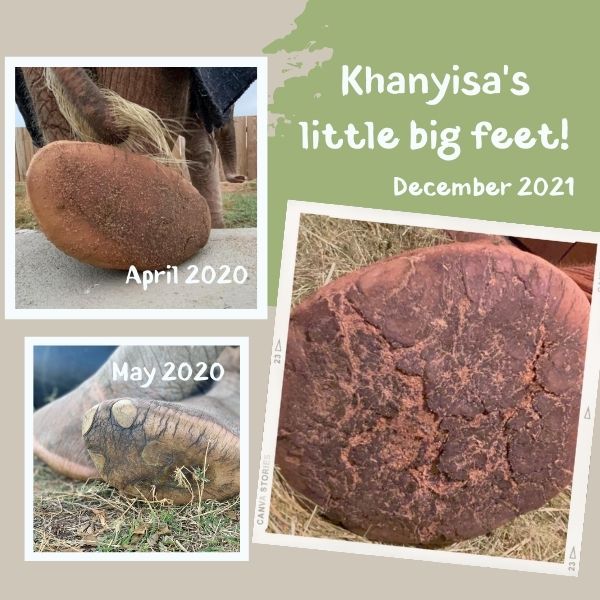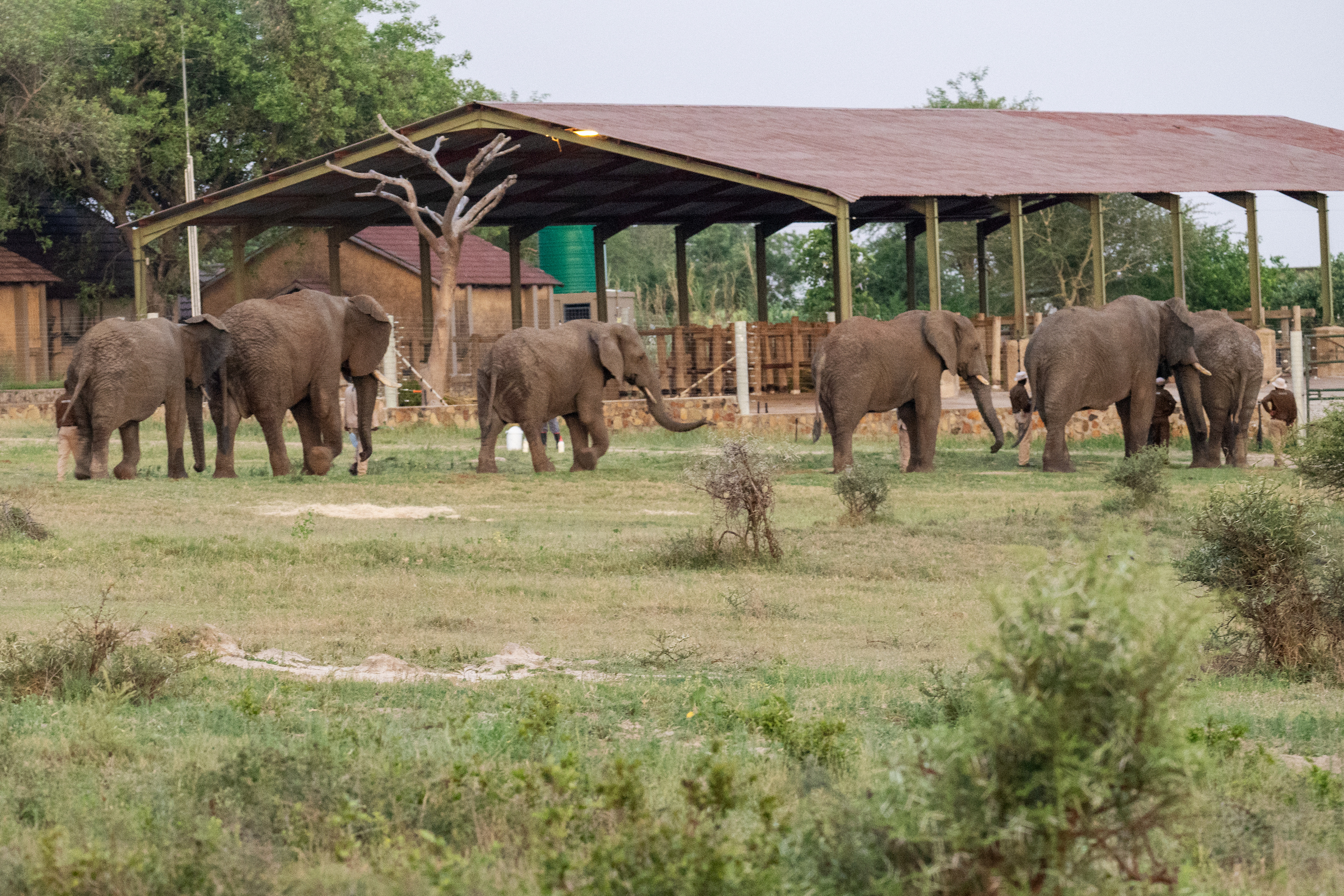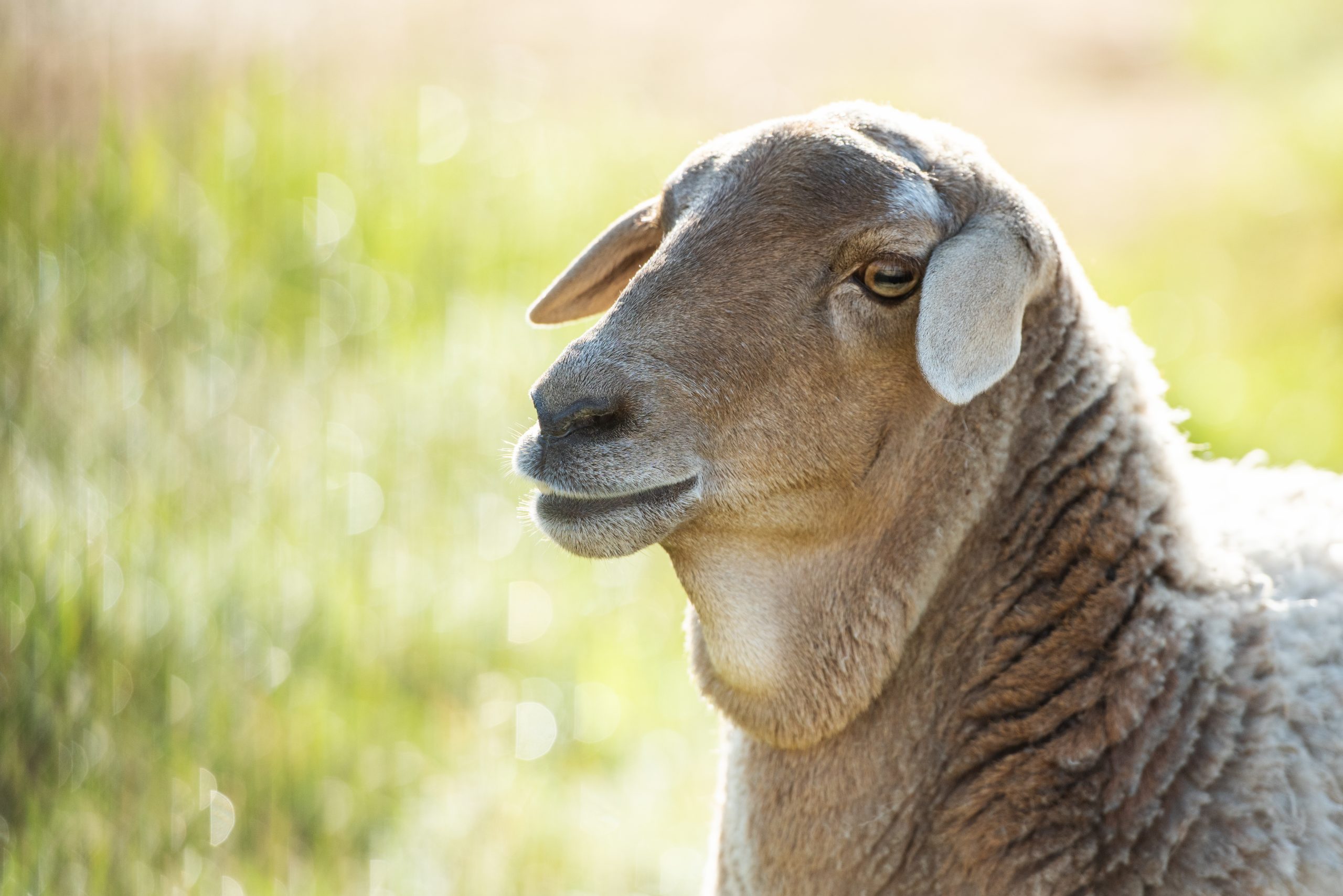Khanyisa’s Great & Growing Feet
From adorable stumbles to slow and steady steps, Khanyisa’s feet have undergone a fair bit of change in the past year – much like the rest of her growing little albino body. The calf is turning two on 26 September 2021 – an estimated date given by our wildlife vets. She has learnt so much from her adoptive family since the beginning of her integration, including some wonderful fancy footwork! Dust baths are a favourite activity of Sunshine’s and she now expertly loosens the soil beneath her feet through steady scrapes and digs, loosening the sand enough to enjoy and toss over herself with her little trunk. She is learning all the tricks of the elephant trade to help her survive in nature.

Soon, Khanyisa will be using her growing feet with the same expertise as her elders, silently and effectively smothering the sound of breaking sticks as she walks through the bush. Elephants have a very particular way of walking. The left hind foot moves, then the left front foot moves, waits a bit, then the right hind foot moves. The right front foot then moves and then there’s a pause before they repeat. Elephants don’t break into a canter or gallop, they simply walk slowly, quickly and sometimes formidably fast.
Elephants belong to a group called near-ungulates, meaning that they have toenails rather than hooves. Baby elephants are born with long toenails which need to be worn down by walking, Khanyisa’s are looking beautiful and trim thanks to her daily exercise. Interestingly, the underside of their feet start to resemble the pattern of the dry African ground out in our wildernesses. The cracks form, making a tread pattern akin to that of a trail runner’s favourite sneakers or shoes. When sticks or stones creep up into the cracks as the elephants roam the wild, these animals are very adept at removing them by rubbing their feet over tree stumps and the like.

They are able to use nature and what it provides as tools to make their lives easier and to survive for longer. Their feet themselves act as tools, for instance digging up sand, but also bulbs and roots to feed on. Khanyisa has been known to use her back feet to throw kicks around and show her power over unsuspecting adversaries like rubber tyres or friends in the herd, like little Timisa. Known for walking with amazing silence despite their massive weight, elephants also use their feet to dig for water and to warn unwelcome visitors by kicking up huge amounts of dust to intimidate.
These amazing silent footsteps hold the potential to bring life into an environment, not only by providing water to smaller animals in the dry season, but also by creating their own exceptional microhabitats. Up to 30cm deep and with a diameter of 50cm, elephant footprints help to create homes for a number of aquatic macroinvertebrate species including backswimmers, gastropods, and tadpoles.
The feet of African elephants contain Pacinian corpuscles, which have been shown to assist with seismic communication. Elephants are able to detect vibrations in the earth, deciphering secret underground messages between one another. We, as humans, may not know what wonders these messages contain, but as a growing elephant, Khanyisa certainly does!
Despite all the incredible abilities of elephant feet, these large limbs do have one shortcoming… Elephants are the only mammals that can’t lift all four feet off the ground at the same time. This means that there is no jumping or leaping in the elephant world! While Khanyisa will not be jumping anytime soon, she has certainly gained a spring to her step by learning more about how to utilise her feet as helpful tools every day.





Regula Koerner
Dearest Khanyisa, our very best wishes to your second birthday and for another wonderful new year in your life with the HERD. We’re sending you a good scratch behind your ears and a huge hug. Lots of kisses from The Koerner Family, CT, USA
Valerie Snyder
Waaay back when I was a baby in the 1960’s, parents would bronze a child’s first pair of shoes and display their darlings tiny shoes with pride ? Seeing the growth and functionality of our Sunshine’s sweet, beautiful feet makes me understand a little bit why the human parents did what they did. (Although, I did not bronze my own girls shoes ?)